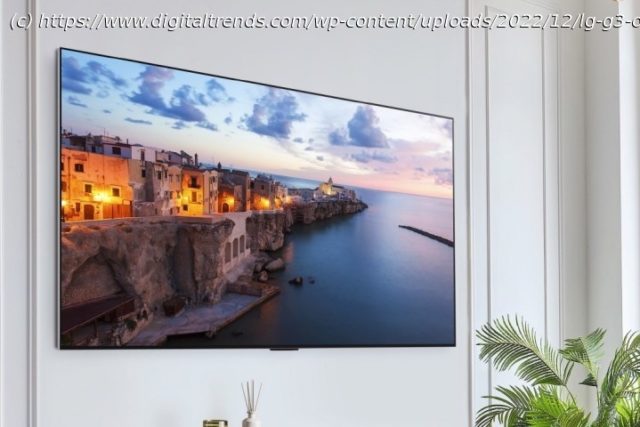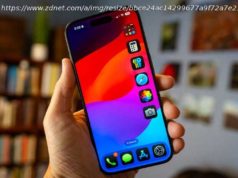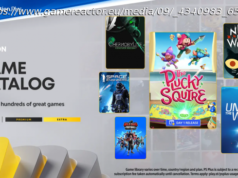Anytime is a good time for a new TV! We’ve broken down the best TV brands on the market to help you decide which model should land in your living room.
Buying a new TV can be quite an ordeal. There’s figuring out what size is best for your living space, then there’s choosing what picture tech you should go with, then there’s the overall price, and then there’s all the bells and whistles you need to think about, like which smart TV platform to trust and what TVs will let you cast photos and videos from your phone or tablet. Yeah, you’ve definitely got your work cut out for you, but it’s actually a good thing to have all these options. Of course, it doesn’t hurt to have a little guidance, too.
We’ve already covered what the best TVs are, but if you’d like some bigger-picture TV intel that you can carry around with you, we thought it best to put together this guide to the best TV brands. And you can find most of them as part of the best Prime Day TV deals. While this isn’t an end-all-be-all resource, we’ve definitely vetted and tested enough TVs to know what brands are worth considering, as well as which are best to avoid. We’ve also made sure to highlight the calling card features and specifications of these noteworthy names.
And if, when you’re done, you’re ready to narrow down your search, check out the early Prime Day TV deals, and our other roundups, including the best TVs under $500, or the best TVs under $1,000. If you’ve dug even deeper and have an OS preference, we’ve got lists of the best Google TVs and the best Roku TVs, too.The best TV brands at a glance
Note: Televisions chosen for this list are representative of makes and models available in the U.S. market. Further, TVs included in this guide were chosen primarily for their picture performance, with other considerations such as operating system or audio performance as secondary considerations.Samsung
South Korea’s Samsung is the de facto market leader in the world television space, and took the top spot again last year, leading competitors like LG and Sony by a wide margin in terms of overall sales. That’s partly a result of the company’s size (Samsung ranks 25th on the Fortune 500), but mostly it’s because Samsung makes great TVs with a focus on accessibility.
Operating system: Tizen
Tizen is Samsung’s own Linux-based smart TV OS that places all your apps in a row along the bottom of the Smart Hub (read: home screen). It’s got all the popular streaming apps as part of a 2,000-plus app library, and it has a neat feature that activates when you select an app, showing you popular sub-categories (like Netflix shows or Spotify playlists) for that app. There’s also a Tizen Gaming Hub which supports Xbox, and GeForce Now for streaming games.
Perhaps most impressive is how Tizen works with the Samsung app family, including SmartThings, Smart Connect, and Smart View. You can use those to mirror content from your phone — even iPhones — to your TV or send TV playback directly to your phone (only on Samsung phones). If you’ve got compatible smart home devices, you also can use the TV as a control hub.
Also, many Samsung TVs offer other cool features like importing app logins from your phone to save time, and the Samsung One Connect Box, built to simplify messy cable nests behind TVs (and to enable cleaner wall-mounting).
Calling cards: QLED, QD-OLED, and Neo QLED
Samsung produces three main types of TVs: QLEDs, QD-OLEDs, and Neo QLEDs. Samsung’s regular QLED models are LED TVs with a layer of quantum dots positioned in front of the backlight. QD-OLEDs actually combine the best of both QLED and OLED technology (more on that below). Samsung Neo QLEDs use the same display tech as the brand’s QLED models but adds mini-LED lighting into the mix. Mini LEDs are much smaller than regular LEDs, which allows these types of TVs to produce a brighter picture with enhanced colors and contrast.
Best for bright rooms
In practice, QLED televisions have been known to be brighter (better for bright rooms) than less-expensive LCD TVs, and unlike OLED, can be more affordably built into large displays (100 inches and beyond).
However, over the last couple of years, Samsung has been producing its own line of OLED TVs. These are billed as “QD-OLED” models because these sets actually combine the self-emissive display tech of traditional OLEDs with the quantum dot-infused backlighting of an LED. As it stands, Samsung has produced two QD-OLED models: the 2023 S95C and the 2022 S95B.LG
Another South Korean company, LG may not be as massive as Samsung, but thanks to its OLED TV display technology, it’s had minimal competition when it comes to top-of-the-line picture performance with its unrivaled contrast and black levels, but new screen tech like QD-OLED is making headway.
Operating system: webOS
webOS is LG’s easy-to-use user interface and, like Tizen, Roku, and Google TV, is the hub from which you access your apps, TV settings, and other advanced features. The most recent version of webOS has been redesigned to offer more customization and shortcuts so users can get to what they want to watch faster.
LG’s Magic Motion Remote is also one of the better-designed remotes, with support for voice commands for both Amazon Alexa and Google Assistant, along with a Magic Explorer feature that lets viewers get additional info about the show or movie they’re watching, from what actors appear in the series or film to notable trivia.
Calling card: OLED
OLED — Organic Light Emitting Diode — is still considered the premier display technology today, but it does have stiffer competition than ever. OLED TV panels are capable of reaching black levels never before seen, with better contrast across the board, and because the individual pixels themselves light up, OLED televisions boast quicker response times (and less input lag) than other types of displays, and the picture integrity is stunning at any viewing angle.






